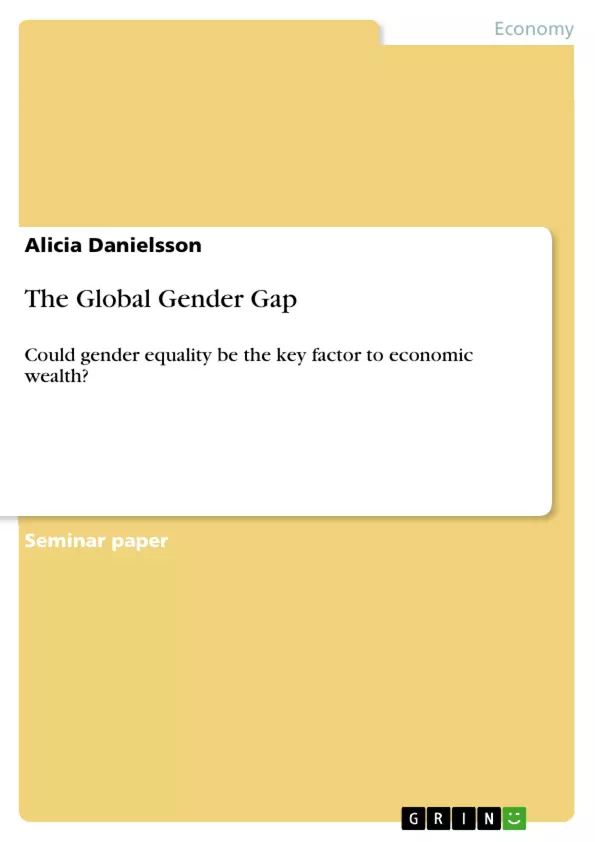One of the highest goals to achieve in an economy nowadays is something described by the term 'sustainable development'. This term takes more factors into account than just the measurement of the gross national product (GNP) to describe the well-being of a particular country. Simply defined, one could say that 'sustainable development' means that "the rate of change of development over time is generally positive over some selected time horizon". The actual development in this case can be seen as a vector of desirable social objectives. These could include amongst others: "increases in real income per capita, improvements in health and nutritional status, educational achievement, access to resources, a 'fairer' distribution of income and increases in basic freedoms."
Many believe that the only way to really be able to achieve a sustainable development is through long-term investments in economic, human and environmental capital. A common shortcoming throughout the world is the fact, that the female half of its human capital is far from exhausted. Too often, women as human capital are undervalued and underutilized. For global economics this can be seen as an excessive deficit, which, if rectified, could result in many benefits for the world economy. In this manner studies have found, that if the world's female capital were used more efficiently, many positive outcomes could be achieved. The economic growth in all the countries of the world would increase lowering the number of people living in poverty. Also, "business performances and innovation would be enhanced." Even problems such as the fertility rates in the world could be counteracted, as the "fertility rates would rise in OECD countries and decline in non-OECD countries".
However, this all still depends on engendered government policies, which in many cases are still up for discussion. This piece of work shall focus on the Global Gender Gap in particular, discussing the matter of encouraging economic wealth my means of gender equality. Notably the current discussion in Germany on the topic of a quota for the representation of female board members shall be examined more carefully.
Inhaltsverzeichnis (Table of Contents)
- Introduction
- What is the Global Gender Gap?
- Definition
- How does the Global Gender Gap occur?
- The Global Gender Gap Report
- Could the reduction of the Global Gender Gap be a solution for economic wealth?
- Gender equality as a theory for economic growth
- The human capital theory in relation to gender equality
- Gender inequality in an international perspective
- Becker's theory on discrimination
- Scandinavia vs. Poland - a comparison
- The reduction of the global gender gap - a solution for economic wealth
- The "Quota"-discussion in Germany
- The arguments in favour of a quota
- The Arguments against a quota
- Conclusion
- A short look at the Spanish "equality" laws and their outcome concerning quotas in comparison
- Conclusion
Zielsetzung und Themenschwerpunkte (Objectives and Key Themes)
This paper explores the concept of the Global Gender Gap and examines the potential for gender equality to drive economic growth. It argues that closing the gender gap in the world is crucial to achieving sustainable development. The paper focuses specifically on the German debate regarding quotas for female board members, providing arguments for and against this policy. Here are the key themes explored in this paper:- The Global Gender Gap and its impact on economic development
- The role of gender equality in achieving sustainable development
- The human capital theory and its implications for gender equality
- The debate on quotas for women in leadership positions in Germany
- The comparison of gender equality policies in Spain and Germany
Zusammenfassung der Kapitel (Chapter Summaries)
The introduction establishes the concept of "sustainable development" as a crucial goal in modern economies and highlights the underutilization of female human capital as a significant global shortcoming. It explores the potential positive outcomes of closing the gender gap, including increased economic growth and improved business performance. The chapter concludes by emphasizing the importance of government policies in promoting gender equality and outlining the focus of this paper on the Global Gender Gap and its impact on economic wealth.
Chapter 2 provides a definition of the "Gender Gap" and explores its various manifestations. It specifically addresses the four sub-indexes of participation and opportunity, educational attainment, political empowerment, and health and survival. This chapter also introduces the Gender Gap Index, a measurement tool for quantifying gender equality across countries.
Chapter 3 delves into the question of whether reducing the Global Gender Gap can contribute to economic wealth. It examines the human capital theory in relation to gender equality, arguing that investing in female education and skills can lead to economic growth. The chapter then explores the concept of discrimination in the context of gender inequality, drawing upon Becker's theory to explain the factors contributing to persistent disparities. It provides a comparative analysis of gender equality in Scandinavia and Poland, highlighting the different approaches and outcomes in these regions. Finally, it discusses the potential benefits of closing the global gender gap for achieving sustainable development.
Chapter 4 focuses on the "Quota"-discussion in Germany, examining the arguments for and against quotas for women in leadership positions. It explores the potential advantages of quotas in promoting gender equality and enhancing diversity in corporate boards. It also considers the counterarguments, including concerns about the potential impact on meritocracy and the effectiveness of alternative approaches.
Chapter 5 briefly examines the Spanish "equality" laws and their outcome concerning quotas in comparison with the German situation. It analyzes the differences in policy approaches and their respective implications for gender equality and economic development.
Schlüsselwörter (Keywords)
The primary focus of this paper is on the Global Gender Gap and its relationship to economic growth and sustainable development. Key terms and concepts explored include:- Gender Gap
- Gender Equality
- Economic Development
- Sustainable Development
- Human Capital
- Discrimination
- Quotas
- Leadership
- Quote paper
- Alicia Danielsson (Author), 2011, The Global Gender Gap, Munich, GRIN Verlag, https://www.grin.com/document/278296



